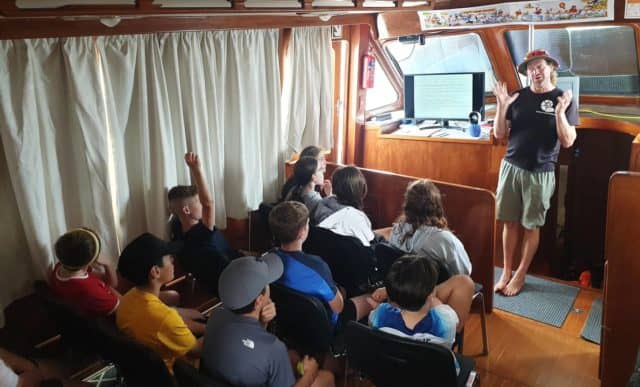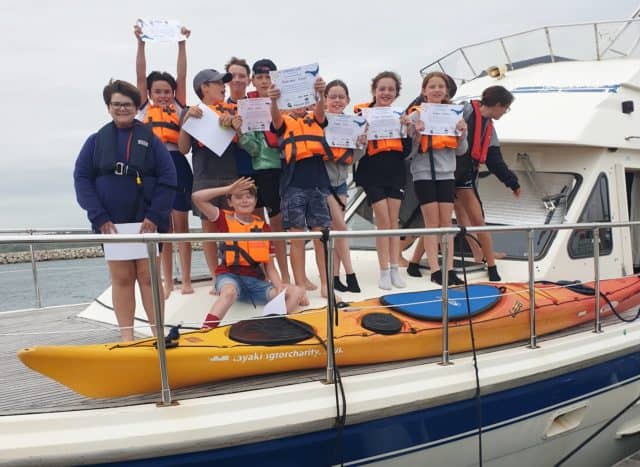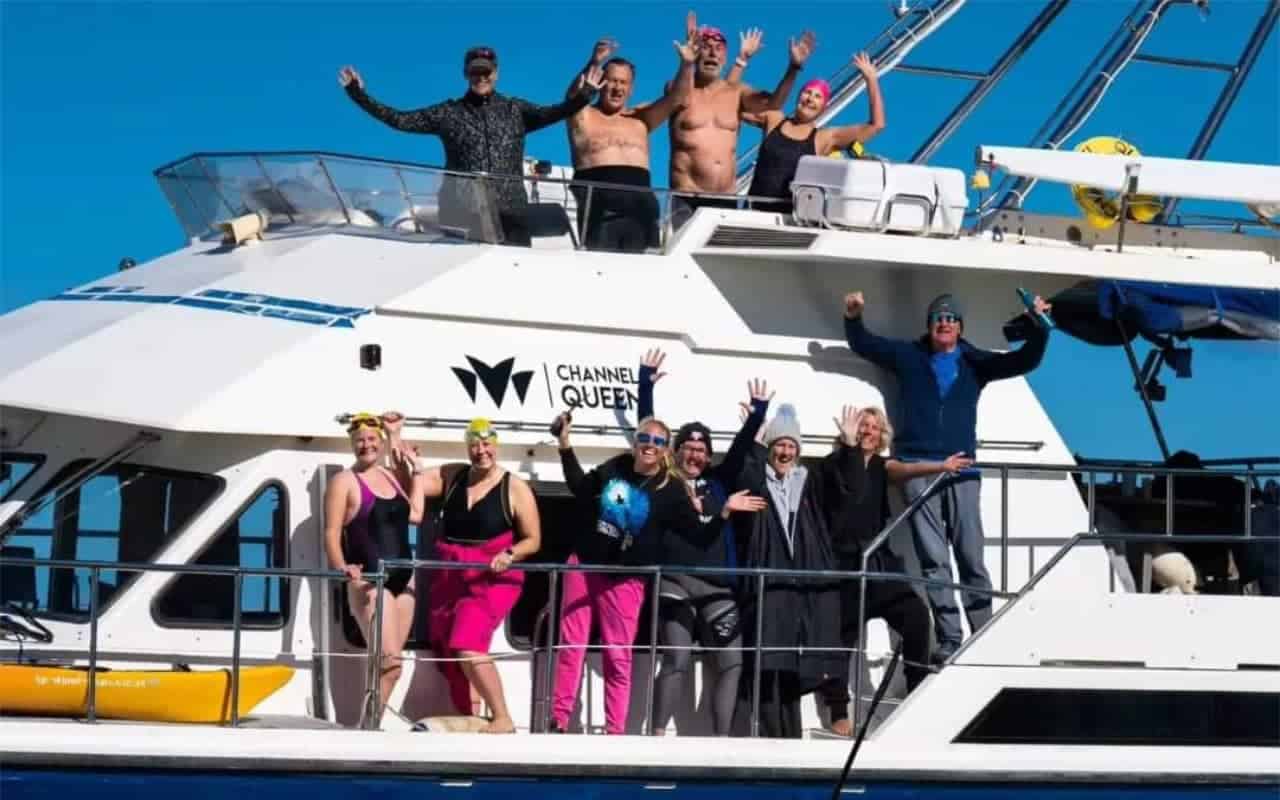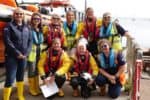Following the recent loss of the 54ft Trader Sunliner motor yacht, ‘Channel Queen’ off the Isle of Wight, Chloe McCardel, the vessel owner, crew from the vessel, a group of concerned locals, and others from the South of the UK are rallying together to salvage the debris from the wrecked ship ‘Channel Queen’.
United by their concern about the debris and chemicals left behind to wreak havoc on the local environment. They will conduct beach cleans from 1,30pm Thursday 3rd August at Freshwater Bay and Compton Chine, Isle of Wight.
The Channel Queen vessel was reinvented as a commercial vessel and children’s classroom for teaching sustainability by Chloe McCardel and her partner Roy Beal.

World Record holder
Chloe has a deep connection with the sea, having swum the English Channel 44 times as a solo swimmer, and holds the World Record for the greatest amount of English Channel crossings in history.
She was bestowed the title ‘Queen of the English Channel’ by the Channel Swimming Association.
Channel Queen, along with a kayak and RIB, were acting as safety escort vessels for a swimming relay, with ten swimmers, on 20th July. At approximately 6am, it is believed that Channel Queen may have struck a submerged object and started taking on water near The Needles on the Isle of Wight.
Beached the vessel at Scratchell’s Bay
The Skipper immediately made the decision to beach the vessel in nearby Scratchell’s Bay to prevent the vessel sinking ensuring all on board could safely disembark.

All passengers and crew on board Channel Queen were wearing life jackets and safely disembarked the beached vessel onto boats assisting the incident, before being transferred to the RNLI Yarmouth all-weather lifeboat shortly afterwards. All passengers and crew walked back on shore afterwards and are OK.
Call for vessel to be salvaged
Chloe asked the insurance company to salvage the vessel urgently after the incident as there was a forecast storm due to roll in over that weekend.
She attempted to explain to them the environmental damage if it was not salvaged. They didn’t salvage. She attempted to organise a salvage herself, but she was unsuccessful.
Chloe and her partner Roy Beal’s home, the school classroom where they were educating primary school children about geology and sustainability (including preventing plastics getting into the ocean), their unique swim escort vessel, which swimmers have used to fundraise 10s of 1000s of pounds for charity.
McCardel: Vessels should not be left abandoned in the sea
Chloe said,
“Vessels should not be left abandoned in the sea. They should be carefully managed at the end of their life to prevent damage to the marine environment.
“Her hull and superstructure were Glass Reinforced Plastic (GRP), she had Flame Retardant (several fire extinguishers) and 1000L of diesel to name some of the toxins. Not to mention the danger to navigation, marine and human lives (as people swim in this area) of the pieces of debris.”
GRP impact on aquatic organisms
Roy Beal, who runs a volunteer beach cleaning group, Clean Jurassic Coast, is keenly aware of the environmental disaster that is the wreck of this once beautiful vessel.
Dr Corina Ciocan (and her team) from the University of Brighton study recently found the first scientific evidence of GRP impact on aquatic organisms. In this study they exposed juvenile mussels, Mytilus edulis and water fleas (Daphnia sp) to glass reinforced plastic (GRP) dust, under laboratory conditions.
Their results showed that after seven days exposure, mussels have actively ingested GRP fragments and displayed inflammatory reactions in the gills and gonad, whilst swimming impairment and sinking of the animals were recorded in the water flea experiment.
Impact of Fibreglass
Fibreglass has similar chemical and physical properties to asbestos: minerals which can be separated into thin, long fibres composed of Si and O, as well as other inorganic materials (Galimany et al, 2009).
Human exposure to these materials can cause fibrosis, lung cancer and mesothelioma by inhalation (Maxim and Maxim, 2001).
Microplastics accumulating into the food chain
Dr Corina Ciocan believes that precise data on the breakdown of GRP and the scale of contamination is just not available at the moment.
However, as with other plastics we can assume that microparticles released from GRP (fibre glass and microplastics) can potentially accumulate into the food chain by zooplankton and filter feeders, and biomagnify to and in higher organisms (Wright et al, 2013).
This is backed up by a 2019 IMO report which found that there are several contaminants associated with abandoned vessels in benthic / pelagic ecosystems, e.g. hydrocarbons, heavy metals, flame retardants. It is reasonable to assume that GRP can break down to microplastics and fibre glass; moreover, microparticles can be released when the boats are crushed, dismantled or just repaired (IMO report 2019).
Nearly 100,000 boats left to rot, decompose and impact the marine life each year
According to a recent survey (IMO, 2020), there are an estimated six million boats in the EU alone, 95% of which are made of GRP.
Every year, around 1-2% (60,000-120,000) of these boats reach the end of their useful life. Of these, only 2,000 are recycled, while 6,000-9,000 are abandoned (accounted for). The rest of nearly 100,000 boats per year are just left to rot, decompose and impact the marine life!
To find out more about the beach clean visit the Clean Jurassic Coast Website.
News shared by Chloe, in her own words. Ed





